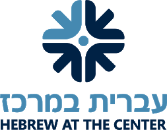Highlights from the Design Lab
January 12, 2017 by
The Design Lab has been full of exploration, experimentation and engineering this year! Read on to hear some Design Lab highlights from students on the North Campus:
At the beginning of the year, Fourth Grade classes came to the Design Lab to collaborate on designing their “dream teacher.” Students worked with a partner to brainstorm some of the qualities of their ideal teacher, and about ways to represent those traits using Design Lab materials. Students then made rapid prototype models of their ideas to symbolize their ideal teacher.
A group of self-selected Fifth and Sixth Graders formed a Birthday Lunch Committee to explore ways to make Birthday Lunch a more communal activity. Following the steps of the Design Thinking process, the students identified the users (their peers), collected information from them about what they enjoy about Birthday Lunch, and collected suggestions for making it more cohesive. The Committee put up posters at Birthday Lunch and asked students and teachers questions such as “What pops into your mind when you hear ‘Birthday Lunch’?” “What do you like about Birthday Lunch (other than the food)?” and “Do you have any ideas about how to make Birthday Lunch bring us together more as a community?” After reviewing the information, the Committee met with the school Administration to make a proposal based on their findings. The Committee suggested three concrete ideas: Hosting an “Are you smarter than a 5th/6th grader?” game between tables from the stage; flexible seating for older students; and an activity to make birthday cards or decorations at each table, with music and Hebrew birthday games.
In October, Second, Fourth, and Sixth Graders came to the Design Lab with their Judaic Studies teachers to engage in a Sukkah Design Challenge. Fourth graders interviewed each other about the difficulties of building a sukkah and designed solutions to help the sukkah-building process. Then the second graders used those scenarios to design solutions. Sixth graders were challenged to build a kosher sukkah given one of five possible scenarios: they would be travelling all week, their yard was full of trees, their yard was very narrow, they didn’t have money to spend on sukkah materials, or they had a very steep yard. The students developed creative solutions to meet their users’ needs, such as a treetop sukkah that you reach with a trampoline, a sukkah that gets pulled by a car, and a sukkah made of cardboard and blankets.
Third Graders undertook the “Marshmallow Challenge.” In the Marshmallow Challenge, students had to work together to build the tallest freestanding structure that could hold a marshmallow on top (though said marshmallow was substituted for Model Magic due to allergies). The students were limited in their materials to 20 pieces of spaghetti, one yard of tape, and one yard of string. First the students spent time brainstorming quietly and independently before sharing their ideas with their partners. The teams then had 18 minutes to put their ideas into action and complete their tower construction
Later in the year, the Third Graders came to the Design Lab for their Native American unit. The students designed and built models of Native American shelters to display at their Native American Museum. First the students researched the types of shelters used by Native American tribes in various regions of the United States. The students then worked together to design and build models of those homes while using as much natural material as possible.
The Fifth Graders engaged deeply in the Design Thinking process for their Invention Convention, in which the students identify the needs of fellow Fifth Graders and design mechanical inventions to solve those problems. First the students interviewed each other to identify things that bug them. Next the students brainstormed potential solutions to those problems. The students then decided on one idea to focus on, and, working either independently or with a partner, built rapid prototypes of their inventions to make their learning visible. To practice rapid prototyping, the Fifth Graders were first given a challenge to design a chair for a particular user out of limited materials. The students then had two Design Lab sessions to make rapid prototypes of their invention designs.
The Fifth Graders also came to the Design Lab to create Immigration Monuments as part of the JPDS-NC Election Project: Kids’ Voices Count. After conducting extensive research on the topic of immigration, the students worked to design and build monuments that would be a meaningful sign of freedom and a welcome message to immigrants entering the United States, like the Statue of Liberty. In Art class, the students saw different perspectives on immigration from different artists and talked about the messages that these images sent. The students then went into the Design Lab to create their own symbols and monuments.
Sixth Grade members of the Design Lab Elective have undertaken a variety of projects so far this year. In one of the first projects of the year, each student interviewed a classmate about challenges they faced at the start of the school year. Students mentioned problems ranging from having too many things to carry, having trouble waking up on time in the morning, and finding a place to store their iPad at home. Once they understood their user’s needs, the students brainstormed solutions and picked one model to prototype. At other meetings of the Design Lab Elective, the Sixth Graders experimented with bits and cubelets, and took apart a telephone in order to analyze the parts, purposes, and complexities of the system. At another session, the students were each given two LED lights and a battery and tasked with making something. One student made a small projector, another built a car, and a third student created a flashlight. Recently, Sixth Graders recreated ancient artifacts as part of their independent research projects on Ancient Egypt.






